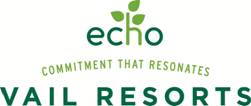Seven steps to achieving your retirement goals
In these days of market volatility and tax uncertainty, you need to make sure you’re doing all you can to make the most of your retirement savings. Here are seven actions to take to maximize your retirement strategy.
1. Contribute to an IRA to Maximize Your Savings
A key way to build your retirement savings is to contribute to an IRA. The maximum contribution is $5,500—or $6,500 if you’re age 50 or older.
The advantages of contributing to an IRA include:
• Earnings with tax-deferred growth potential
• Potentially tax-deductible contributions (subject to IRS eligibility rules)
• Access to a wide array of investment options
2. Set Up Automatic Contributions for Investing Ease
There’s no chance you’ll forget to make a contribution when it’s done automatically for you. If your financial institution offers a funds transfer service, you can set up an automatic IRA contribution schedule through electronic transfers from your other financial accounts.
If your current financial institution doesn’t offer this service, you might want to investigate one that does. Typically, you can either set up a one-time transfer, or establish a recurring schedule to make your IRA contributions over time. Once you specify the dates and amounts, your funds will transfer as scheduled.
3. Diversify Your Savings to Better Manage Taxes in Retirement
No one knows what the tax future holds. Diversifying your retirement assets among tax-free, tax-deferred and taxable accounts may help you reduce your exposure to future tax increases and provide greater flexibility for managing your income stream in retirement.
If you only have tax-deferred 401(k) or Traditional IRA assets, you may want to consider making contributions to a Roth IRA, or converting Traditional IRA or 401(k) assets to Roth IRAs or Roth 401(k)s (if your plan permits), to create a source of tax-free income in retirement.
If your income is too high to make Roth contributions, you can still make non-deductible contributions to a Traditional IRA (and, if it makes sense for you, subsequently convert those amounts into a Roth IRA) while continuing to build your savings.
4. Invest in a Roth IRA for a Tax-Free Future
If you’re someone who feels strongly that you will remain in a high tax bracket in retirement and that taxes will inevitably go up, consider putting more of your savings into a Roth IRA and benefit from tax-free income in retirement.
Roth IRA assets will one day provide either tax-free income to you in retirement or a tax-free inheritance for your beneficiaries.1 A Roth IRA also offers additional advantages:
• Income planning flexibility—With a Traditional IRA, at age 70½ you must stop contributing and begin taking minimum distributions—even if you’re still earning income. With a Roth, however, there is no contribution cutoff, provided income requirements are met, and no rule about when you must begin tapping into the account. Roth assets have the potential to grow as long as you want, allowing you to make—or forgo—withdrawals as needed.
• Wealth transfer advantages—If the assets in your IRA are not needed to fund your retirement, a Roth IRA can be an effective wealth-planning tool for beneficiaries. They can enjoy continued asset growth potential and won’t have to pay taxes when they withdraw the assets.
Due to income limitations, not everyone can contribute to a Roth. However, anyone can convert to a Roth—so if you have savings in a Traditional IRA or an employer plan, consider converting all or a portion of those assets.
To help you understand how a Roth conversion will likely affect your financial scenario, I can provide a customized Roth Conversion Analysis for you. This report explores your specific situation, factoring in such variables as the amount to be converted, the distribution year, your date of birth and where you are in the retirement planning cycle. Based on this input, the report shows the after-tax future value of an IRA balance, comparing the outcomes of a Traditional IRA with those of a Roth IRA. You’ll also be able to see the wealth planning advantages of “stretching” a Roth IRA. As with all tax-related issues, you should also discuss your situation with your tax advisor.
5. Review Your Beneficiaries for Smooth Wealth Transfer
If your life has undergone any changes that could influence who inherits your retirement savings, now is a good time to conduct a beneficiary review of all of your accounts to make sure the savings you’re building now will be transferred according to your wishes.
Remember that beneficiary designations on an IRA or qualified plan account always supersede what may be in your will; also, if you converted an account into a Roth IRA, your beneficiary designations may not have carried over. Check with your financial institutions to make sure your beneficiary information is correct and current.
6. Rebalance for Asset Allocation Alignment
Your overall investment strategy helps dictate your asset allocation strategy. Markets change and investments shift in value. To prevent inadvertently taking on more (or less) risk than you’re prepared to, your retirement savings shouldn’t be weighted too heavily in any direction. Remain within your risk tolerance by rebalancing your retirement asset allocation so it’s properly aligned with your investment strategy.
7. Consider Consolidating Accounts for Greater Control Over Investment Direction
If you’re like most people, you have retirement savings scattered among several different financial institutions and several different kinds of accounts. That means your retirement money may not be working as efficiently for you as it could be. This is especially the case if you have money sitting in former employers’ 401(k) accounts that are experiencing underwhelming performance or are not aligned with your current retirement strategy.
One retirement account with different investment vehicles working together is much easier to keep track of than several disparate accounts. Plus, consolidating all of your retirement savings in one place—and into IRAs that provide a wide variety of investment options—lends you greater control over how your money is working for your future. It’s especially important to consider consolidating retirement accounts if you’ve recently changed jobs or if your employer has merged with another company or gone out of business.
I can review all of your assets with you and help you develop a retirement strategy specific to your needs. That way, your retirement savings can work in tandem with your retirement strategy.
Bruce Hemmings is a Financial Advisor and Senior Vice President with the Global Wealth Management Division of Morgan Stanley at Centerra. He can be reached at bruce.hemmings@ms.com or (970) 776-5501.
The information contained in this article is not a solicitation to purchase or sell investments. Any information presented is general in nature and not intended to provide individually tailored investment advice. The strategies and/or investments referenced may not be suitable for all investors as the appropriateness of a particular investment or strategy will depend on an investor's individual circumstances and objectives. Investing involves risks and there is always the potential of losing money when you invest. The views expressed herein are those of the author and may not necessarily reflect the views of Morgan Stanley Wealth Management, Member SIPC, or its affiliates. Morgan Stanley Wealth Management LLC. Member SIPC.
![]() 0 Comments on "Seven steps to achieving your retirement goals"
0 Comments on "Seven steps to achieving your retirement goals"
Be the first to comment below.



 Vail Town Council to weigh new plan to redevelop T...
Vail Town Council to weigh new plan to redevelop T...  All about indexes
All about indexes  Transforming your social security into a winning r...
Transforming your social security into a winning r...  Pass sales, real estate transactions, revenues inc...
Pass sales, real estate transactions, revenues inc...  Vail Valley native with passion for Biophilic inte...
Vail Valley native with passion for Biophilic inte...  Beaver Creek starts work on new summer activities
Beaver Creek starts work on new summer activities  Land Trust, ECO Trails, Vail Resorts team up to cl...
Land Trust, ECO Trails, Vail Resorts team up to cl...  EUROVISION named Host Broadcaster for 2015 World A...
EUROVISION named Host Broadcaster for 2015 World A...  Vail Resorts brings back Lindsey Vonn's 'School of...
Vail Resorts brings back Lindsey Vonn's 'School of...  Hundreds turn out for 2015 World Championships vol...
Hundreds turn out for 2015 World Championships vol...  Eagle County Senior Health Expo and 9th Annual Hea...
Eagle County Senior Health Expo and 9th Annual Hea...  Final race of Vail Mountain Trail Running Series s...
Final race of Vail Mountain Trail Running Series s...  Before you write your will ...
Before you write your will ...  2015 World Ski Championships volunteer recruitment...
2015 World Ski Championships volunteer recruitment...  Ascent Sotheby’s International Realty in Vail an...
Ascent Sotheby’s International Realty in Vail an...  CDOT outlines road closures for local stages of US...
CDOT outlines road closures for local stages of US...  Italian artist creates unique trophies for Vail, B...
Italian artist creates unique trophies for Vail, B...  Vail Recreation District once again hosting Jake W...
Vail Recreation District once again hosting Jake W... 

